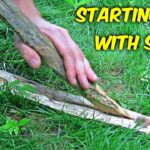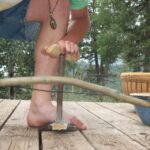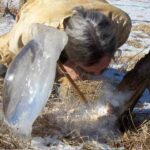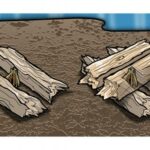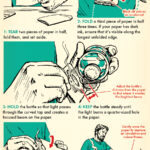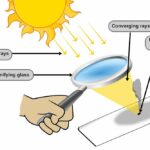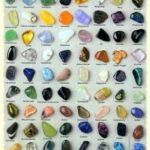How Do You Start A Fire With Sticks
1. Gather dry sticks and tinder materials like dry leaves, bark, or grass.
2. Select a fire-safe location, away from any flammable materials or structures.
3. Clear the area around the fire pit, removing any debris or potentially flammable objects.
4. Prepare your fire pit by digging a small hole in the ground or using rocks to create a contained space.
5. Collect two main sticks, one about arm’s length and another slightly longer. The arm’s length stick will act as the base or fireboard, while the longer stick will be used as the spindle or drill.
6. Carve a small notch near the edge of the fireboard using a knife or sharp-edged stone.
7. Place the fireboard on the ground, holding it steady with your foot or by placing rocks around it to prevent movement.
8. Position the tip of the spindle halfway into the notch on the fireboard, applying downward pressure.
9. Use your hands to rotate the spindle rapidly, back and forth, between them.
10. Continue rotating the spindle vigorously until smoke starts to appear from the notch.
11. Keep rotating until an ember is formed inside the notch, created by the friction of the spindle against the fireboard.
12. Once the ember is formed, carefully transfer it onto a bed of tinder materials inside the fire pit.
13. Gently blow on the ember to kindle it into a flame.
14. Gradually add more twigs and small sticks to the flame, creating a stable fire base.
15. Keep adding larger sticks and logs to build the fire, ensuring proper ventilation for the flames to grow.
16. Maintain the fire by adding fuel as needed and managing the airflow to sustain a steady burn.
17. Ensure you have a water source nearby in case the fire gets out of control or needs to be extinguished.
18. Never leave the fire unattended and always fully extinguish it before leaving the area.
19. To extinguish the fire, pour water over it, making sure all embers and coals are completely doused.
20. Stir the ashes and ensure no hot spots are left, adding more water if necessary.
21. Feel the ground around the fire pit to ensure there is no residual heat remaining.
22. Properly cool down the fire pit area by pouring water or removing any burning materials.
23. Clean up the fire pit area by collecting any debris or trash and disposing of it appropriately.
24. Leave no trace: Take all trash with you and leave the area as you found it.
25. Practice fire safety by following local regulations and guidelines.
26. Learn about fire safety precautions, including using fire extinguishers and emergency procedures.
27. Familiarize yourself with fire-making techniques, such as using natural fire starters or alternative methods.
28. Educate yourself on the fire dynamics, including fire behavior, fire triangle, and standard fire safety guidelines.
29. Make sure to learn about the techniques and precautions to safely manage a fire in different weather conditions.
30. Always prioritize safety and responsible fire management practices when starting a fire with sticks.
More About How Do You Start A Fire With Sticks
Title: Mastering the Ancient Art of Starting a Fire with Sticks
Introduction:
In a world now dominated by modern conveniences and instant solutions, there is immense value in rediscovering the ancient skills that our ancestors once thrived on. One such skill is the art of starting a fire with sticks – a technique that harks back to a time when humans relied solely on their ingenuity and resourcefulness to survive. As we marvel at our predecessors’ ability to master the elements, it is only fitting that we rekindle this timeless knowledge, not only as an act of homage but also as a practice that can connect us to our roots and offer invaluable benefits in the modern world.
Amidst a plethora of fire-starting gadgets available today, the technique of starting a fire with sticks, also known as friction fire, allows individuals to tap into the inherent power of nature using only natural materials and minimal tools. This elemental, hands-on approach has a primal charm, capable of evoking a sense of empowerment and self-reliance. Moreover, its simplicity serves as an apt reminder that great achievements often arise from humble beginnings.
A fundamental understanding of the process can foster a deep appreciation for the intricate balance between nature and humanity, unveiling the insights our predecessors once possessed. By exploring how to create fire from sticks, we trace the footsteps of ancient civilizations and forge a connection with the primitive heritage embedded within us all. Through this practice, we embark on an experiential journey that transcends mere knowledge; it cultivates a profound sense of respect for the environment and a renewed understanding of our place in the natural order.
Learning the art of starting a fire with sticks encourages us to engage our senses fully. It requires patience to master the subtle nuances of the technique, as well as a keen eye to identify the ideal materials in the surrounding wilderness. By honing our observational skills, we awaken our innate ability to notice the richness of nature’s offerings and to find hidden resources, appreciating the interconnectedness of the world around us.
Beyond its historical significance, knowing how to start a fire with sticks can be a valuable survival skill in contemporary life, especially in wilderness scenarios or during emergencies when access to traditional fire-starting tools is limited. In such situations, the ability to create fire by harnessing the power of friction transforms sticks and stones into instruments of hope and sustenance. This ancient knowledge stands as a testament to the ingenuity of our ancestors and equips us with the tools to navigate unforeseen challenges.
As we embark on this journey to master the art of starting a fire with sticks, let us embrace the opportunity to reconnect with the essence of human existence. Through our website and blog, we aim to impart practical techniques, tips, and fascinating anecdotes that will inspire our readers to develop this invaluable skill. By sharing this ancient wisdom, we foster a community of like-minded individuals who understand the importance of preserving ancestral knowledge and seeking harmony with our natural surroundings.
Join us as we embark on this journey of discovery and reconnect with our ancient roots. Together, let us master the elemental technique of starting a fire with sticks and ignite a renewed understanding of humanity’s relationship with nature.
How Do You Start A Fire With Sticks FAQs:
1. Q: What type of sticks should I use to start a fire?
A: Dry hardwood sticks are the best for starting a fire as they burn longer and produce more heat. Examples include oak, maple, or birch.
2. Q: How do I prepare the sticks before starting a fire?
A: Gather a bundle of sticks of various sizes. Remove any damp or wet parts by drying them near the fire or in direct sunlight.
3. Q: What techniques can I use to start a fire with sticks?
A: Two common techniques are the bow drill method and the hand drill method. Both involve rotating a stick against a flat piece of wood to create friction and generate heat.
4. Q: Do I need any additional tools besides the sticks?
A: Yes, you will need a fireboard (flat piece of wood for friction), a spindle (a stick for rotating against the board), and a socket (a small stone or wood piece to hold down the spindle).
5. Q: How do I use the bow drill method?
A: Place the flat fireboard on the ground, hold the spindle upright on it, and apply downward pressure with the socket. Use a bow to rotate the spindle against the fireboard, creating friction that will eventually generate an ember.
6. Q: Can anyone start a fire with sticks?
A: While it requires practice and patience, with the right technique and suitable materials, most people can learn to start a fire using sticks.
7. Q: What is the hand drill method?
A: This involves using a thin, straight stick (spindle) and a hand socket. Create friction by rapidly rolling the spindle between your palms against the fireboard until an ember forms.
8. Q: How can I increase my chances of success when starting a fire with sticks?
A: Choose dry materials, apply consistent pressure, and ensure the fireboard and spindle are in good contact. Be patient, as it can take some time for the ember to form.
9. Q: What should I do once I have an ember?
A: Transfer the ember carefully onto a bed of dry, fine tinder and gently blow on it to provide oxygen. Gradually add more tinder and small sticks to build the fire.
10. Q: Are there any safety precautions I need to follow?
A: Always be cautious with fire and ensure that you are in a safe location for starting and maintaining a fire. Have a water source nearby, clear the area of any flammable materials, and never leave the fire unattended.


